In an early scene in Alena Lodkina’s Petrol (2022), an elderly Russian woman named Bella (Becky Voskoboinik) reads coffee grounds for the film’s protagonist, Eva (Nathalie Morris). Gazing at the sediment accumulated in the bottom of Eva’s teacup, Bella divines, ‘Someone from the other side is thinking of you.’ Enquiring whether that someone is a ‘ghost’, Eva’s question is affirmed by Bella’s response: ‘Yes, something like that. And maybe it knows something about you.’
This otherworldly motif of connection reappears in a subsequent scene featuring Eva and her mother, Viktoria (Inga Romantsova), who refers to the scientific phenomenon of quantum entanglement:
VIKTORIA: The point is … information becomes material.
EVA: What information?
VIKTORIA: Our thoughts, memories … the organisation of nature … everything is information. Take, for instance, quantum entanglement.
EVA: What?
VIKTORIA: You remember a person … and they call you that same day … A ‘spooky action at a distance.’ As Einstein said.
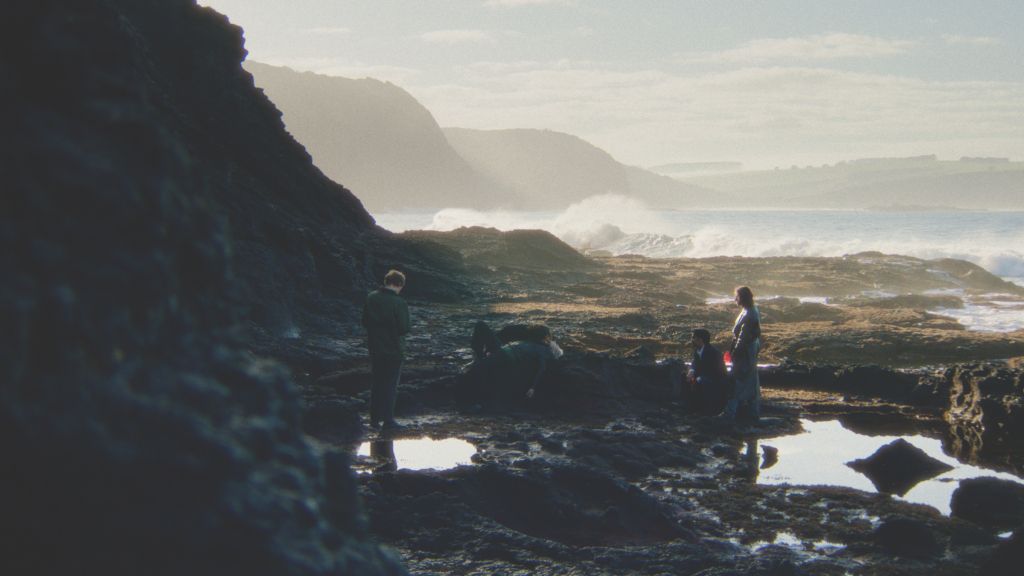
Although these scenes gesture towards the construction of a supernatural narrative, Petrol never adheres to the conventions of the horror genre, and nor could it be characterised as a ghost story. Rather, these moments are threaded into the structure of the film as benign spectres, underlining the influence that Lodkina took from 1930s and 1940s horror films that, in her words, ‘blend genre with lyricism and tap into the supernatural quality of reality’.[1]Alena Lodkina, quoted in Silvi Vann-Wall, ‘Petrol Director Alena Lodkina: “I’m Interested in Cinema That Feels Intimate”’, ScreenHub, 15 August 2022, <https://www.screenhub.com.au/news/features/petrol-miff-alena-lodkinaaustralian-russian-director-interview-2558242/>, accessed 27 September 2022. Inflecting its cinematic portrayal of contemporary Melbourne with uncanny disturbances, magical repetitions and eerie echoes, Lodkina’s Petrol reveals unexpected apparitions within the mundane details of Eva’s everyday.
Although Strange Colours’ outback location … is replaced here by inner-city Melbourne’s intellectual, arts student–inhabited milieu, Petrol furthers Lodkina’s reckoning with the complex formation and negotiation of female identity.
Premiering internationally at last year’s Locarno Film Festival and nationally at the Melbourne International Film Festival soon after, the sophomore feature film by Russian-born, Melbourne-based Lodkina is both a departure from and a continuation of the themes of herdebut feature, Strange Colours (2017). Although that film’s outback location of Lightning Ridge (and its predominantly male opal-mining community) is replaced here by inner-city Melbourne’s intellectual, arts student–inhabited milieu, Petrol furthers Lodkina’s reckoning with the complex formation and negotiation of female identity. The fraught father–daughter dynamic of Strange Colours finds a different expression in Petrol’s focus on the complicated friendship that develops between Eva, a film student with Russian roots, and an enigmatic performance artist named Mia (Hannah Lynch). Their blossoming relationship not only lifts Eva out of her insular existence but also injects a strange sense of magic into her life, with Mia serving as the muse for her graduation project. As Eva’s intense feelings for Mia are gradually left unreciprocated, the hazy and confused state of enmeshment that can occur in female friendships shifts to a haunting interrogation of Eva’s identity and her increasingly blurred perception of the distinctions between reality, imagination, dreams and art.
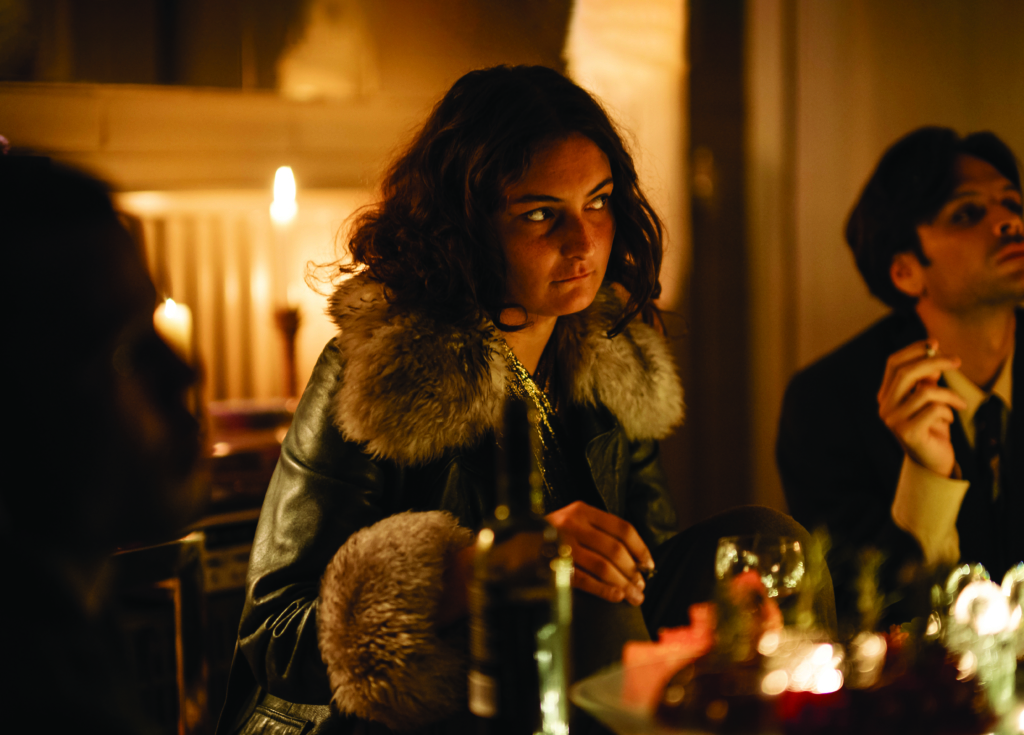
Towards a cinematics of intimacy
Eva’s approach to filmmaking is first displayed during a screening of her short experimental work Bella in the Afternoon for her film class. Capturing the visual details and textures of Bella’s domestic space (her pet budgerigar, a bowl of lemons set next to two old framed photographs, the shadows cast on the living room wall by the trees outside the window), she replaces the diegetic sounds of this filmic tableau with the gentle crash of the ocean. Responding to her tutor’s (Nassiem Valamanesh) question about whether the short is ‘more of a portrait of yourself or of the subject’, Eva says that it is ‘about finding somewhere between reality and interpretation’. This scene in many ways foreshadows the metatextual questions directed at Lodkina about the intersections between her and the character of Eva. Although Eva shares Lodkina’s Russian heritage and film school background, Lodkina has emphasised in interviews that Petrol is ‘not autobiographical at all. It’s a very fictional story, set in a fictional world [… but] the film was approached from a very personal angle.’[2]ibid. Indeed, the recourse to the personal in the film is concerned not with memorialisation but with Lodkina’s interest in ‘cinema that feels intimate’.[3]ibid.
The film’s opening moments establish the sphere of intimacy in which Petrol will operate. The first shot of a blue expanse of water pans right to take in a sequence of rocky cliffs before revealing Eva recording the white noise of the ocean with a handheld microphone. As she adjusts the volume on her recorder and removes her headphones, the audio transitions from the subjective aural atmospherics captured by her microphone to the objective soundscape of her surrounding environment, which is overlaid with instrumental music. Walking to the other side of the cliff, Eva begins recording again and, this time, discerns a melodic humming – the siren song upon which the remainder of the film will pivot. Moving in the direction of the mysterious sound, she observes what appears to be a performance rehearsal involving Mia dressed as a vampire while reciting lines from Thomas Browne’s 1642 book Religio Medici. Visibly entranced by Mia’s performance, Eva observes the scene from a distance, with her microphone providing both proximity to and intimacy with a moment from which she would otherwise be excluded. This opening scene foregrounds not only the subjective lens through which the film will unfold but also the manner in which the cinematic apparatus is key to facilitating this intimacy.
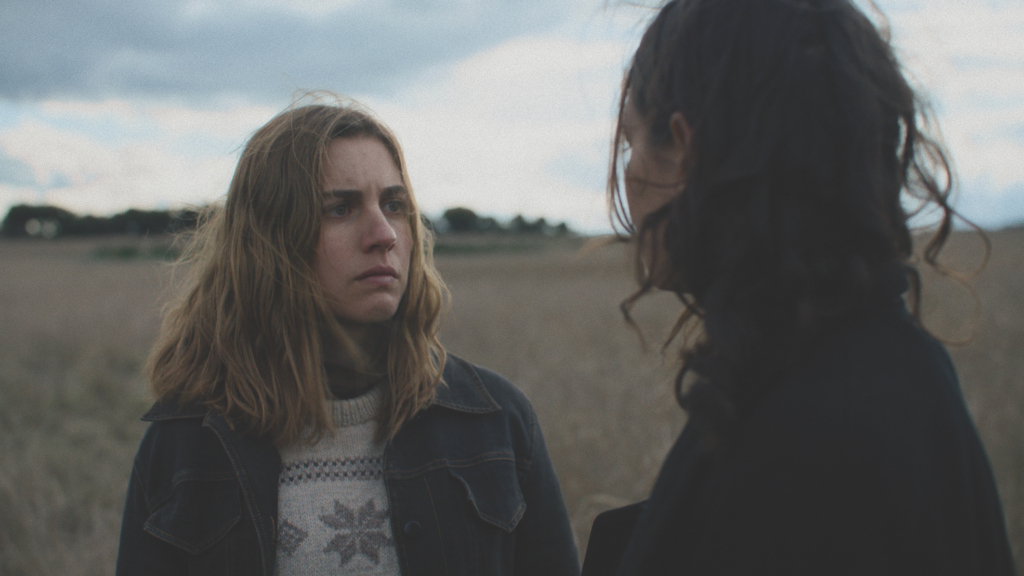
Eva’s audio recording of the waves is a recurring trope that contributes to the sense of haunting that runs through Petrol. Discussing the use of ocean waves on the soundtrack for Bella in the Afternoon, Eva claims that they convey ‘the frailty of [Bella’s] body at this point of time, but also […] the freedom of her imagination’. In this context, the recording is afforded a privileged position in the sound design as an aural metaphor for interior expression. However, ocean sounds are not only used to convey the slippage between domestic reality and Bella’s inner world in Eva’s short film; they also communicate the liminal space between reality and dream within Petrol itself. The recording of the sea, which is accompanied by Mia’s humming, overwhelms the film’s soundtrack in two additional scenes: one in which Mia hands Eva a conch shell that Eva puts to her ear; and another where Eva contemplates the refracted, reflective surfaces of a sculpture shaped like a gramophone’s horn. Significantly, the symbolic portals of the shell and the sculpture do not bring Eva closer to Mia, the original source of the harmonic murmuring, but provide access to a space that houses the presence of an undefined otherness.
This spectral motif is not limited to the film’s sound design; it is also woven into the images. During a sequence in which Eva films Mia in the courtyard of their apartment, the flow of the action possesses the strange temporality of being played out in both the ‘real time’ of the filming and the suspended time of the editing suite in which Eva is reviewing the footage. Although Mia’s face is the central focus of the frame, the camera also captures an unidentifiable movement in a window in the background of the shot. When Eva rewinds and replays the footage, the close-up of Mia suddenly forms a glitchy, pixelated kaleidoscope. As the camera zooms in on the frozen image on the editing screen, Eva’s voiceover recalls a sentence from Religio Medici: ‘The blessed spirits are not at rest in their graves, but wander solicitous of the affairs of the world.’[4]Thomas Browne, Religio Medici, A Letter to a Friend, Christian Morals, Urn-burial and Other Papers, Roberts Brothers, Boston, MA, 1878 [1642], p. 75. In a spooky materialisation of Browne’s prose, a shadowy figure on the right of the screen haunts Eva’s footage. Visually recalling Eva and Viktoria’s conversation about quantum entanglement, this shot transitions to a close-up of an artwork that is a tactile re-creation of the pixelated image through its construction of a topography composed of jagged cubes of multicoloured jelly.

The continuity between the scenes not only underscores the pervasive feeling of deja vu in Petrol, but is also representative of Lodkina’s broader visual strategy for the film:
I just like to settle in and look at something, and allow the audience to look at the frame and [to] see the details of the mise en scène and […] something in the background that might give you a clue about the scene […] and the world of the film.[5]Alena Lodkina, in ‘Director Alena Lodkina Discusses Her New Film Petrol’, Primal Screen, Triple R, 8 August 2022, available at <https://www.rrr.org.au/on-demand/segments/interview-with-director-of-petrol-alena-lodkina>, accessed 30 September 2022.
Reminiscent of film scholar Christian Keathley’s cinematic play on ‘panoramic perception’, which is concerned with a ‘tendency to sweep the screen visually in order to register the image in its totality, especially […] marginal details and contingencies’,[6]Christian Keathley, Cinephilia and History, or The Wind in the Trees, Indiana University Press, Bloomington & Indianapolis, IN, 2006, p. 8. Lodkina’s attentiveness to covert visual gestures within the frame contributes to the film’s oneiric structure. This is evident in the juxtaposition of dreamily connected shots that deny full interpretation in favour of allusion and subtle suggestion, such as an isolated image of petrol and water mixing in an iridescent smear on the surface of a road. At first blush, the image may appear unrelated to the action; however, its poetic evocation of the film’s title emphasises the manner in which banal reality and traces of the fantastical are profoundly intertwined through Eva’s point of view.
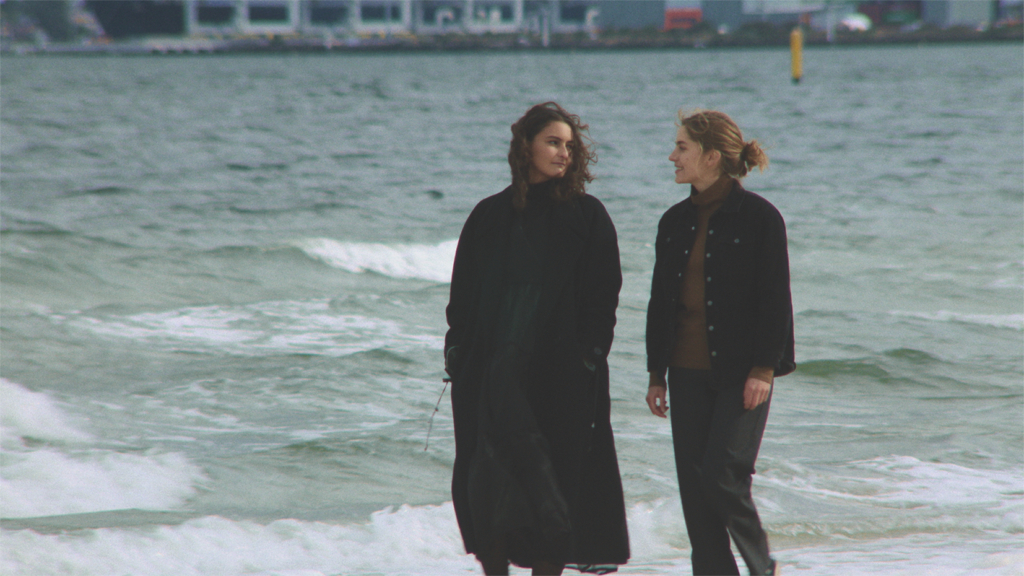
Fracturing the real
Not unexpectedly, Lodkina has commented that Petrol is inspired by a ‘surrealist methodology’.[7]Lodkina, quoted in Vann-Wall, op. cit. This reference perfectly aligns with the film’s hallucinatory visuals, which include moments of resplendent magic such as when Mia, with the playful wink of an eye, conjures a beachside picnic of cheese and crackers, prawns, and fresh fruit; a phantasmagorical scene in which Mia levitates after dancing with Eva at a house party; an encounter with a ‘grumpy’ spirit via a ouija board; and repeated visions of Eva’s doppelganger. Deepening the film’s surrealist tendencies, Lodkina has purposefully composed the raw material of Petrol into a collage – a medium favoured by surrealist artists and writers[8]See Charles Cramer & Kim Grant, ‘Surrealist Techniques: Collage’, Smarthistory, 8 April 2020, <https://smarthistory.org/surrealist-techniques-collage/>, accessed 21 October 2022. – by drawing from
overheard conversations, personal dreams, fantasies, things from books and literature, and various observed moments of real and imagined experiences […] I wanted to create this collage where the film would become a constellation of various moments, and those moments would be […] stitched together through a very specific logic of the film.[9]Lodkina, in ‘Director Alena Lodkina Discusses Her New Film Petrol’, op. cit.
The ‘logic’ of Petrol is not only engaged with the aesthetics of the surrealist movement but also concerned with its preoccupation with capturing the mutability of experience and the unravelling of identity.
French literature and visual culture scholar Elza Adamowicz argues that collage provided surrealists ‘a site of aesthetic paradox and tension, between literal presence and metaphoric transformation’, whereby the ‘ambivalence of collage is celebrated in images both familiar and strange, as in dream images’.[10]Elza Adamowicz, ‘Collage’, in Natalya Lusty (ed.), Surrealism, Cambridge University Press, Cambridge, UK, 2021, p. 184. By employing collage as a structuring device for Petrol, Lodkina emphasises that the ‘logic’ of her film is not only engaged with the aesthetics of the surrealist movement but also concerned with its preoccupation with capturing the mutability of experience and the unravelling of identity.
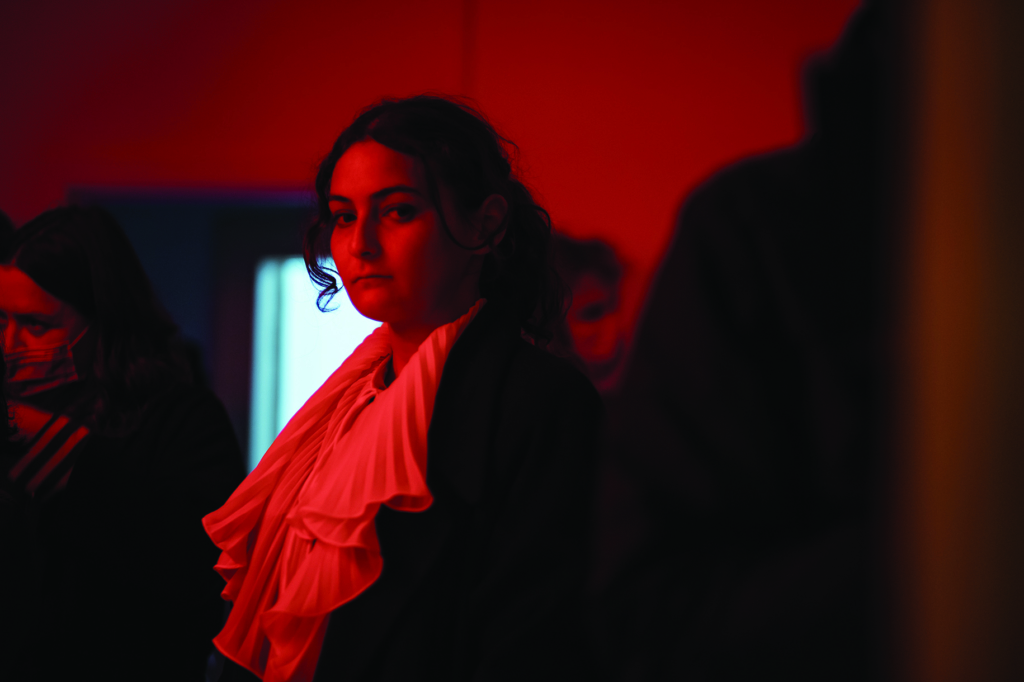
This is particularly evident in the scene in which Eva encounters her double in a bathroom mirror, which reflects not her face but the back of her head. Closely resembling the 1937 surrealist painting Not to Be Reproduced by René Magritte – whose works often feature obfuscated faces – this faceless vision of Eva indicates a certain imperceptiveness bound up in her naive apprehension of reality and disoriented self-image, which is exacerbated by her obsession with Mia. Eva tries on Mia’s clothes, has a liaison with Mia’s ex-boyfriend Bell (Robert P Downie) and traces Mia’s movements through the streets of Melbourne so as to disentangle the complexities of her impenetrable friend, but all to no avail. The paradox of Eva’s attempt to find herself via her friendship with Mia is revealed in a dream sequence in which Eva follows Mia through a desolate landscape of marram grass before telling her, ‘I know something about you […] You don’t really live, not really. It’s all an act.’ Mia’s reply – ‘You’ve gotten yourself confused, darling’ – ultimately underscores the melancholic realisation of ‘the difficulty of knowing and getting close to others’[11]Alena Lodkina, ‘Director’s Statement’, in Arenamedia, Petrol press kit, 2022, p. 5. that Lodkina explores in the film.
Clouding the distinction between actuality and imagination, Petrol plays with a simultaneously charming and perturbing ambiguity. When Bella reads Eva’s coffee grounds again later in the film, she discerns the image of a rusalka, a mythical water creature from Slavic folklore. It is unclear whether Bella’s warning – ‘She can pull you under water, lure you in and tickle you to death’ – is referring to Mia or to Eva herself, who, in a preceding scene, is surprised when her reflection in a cup of coffee meets her gaze with a smile and a wink. In traversing the fragile line between self and other, Petrol suspends Eva, and by extension the viewer, in a tantalising space of becoming – seduced by the unknown, and haunted by magic.
Endnotes
| 1 | Alena Lodkina, quoted in Silvi Vann-Wall, ‘Petrol Director Alena Lodkina: “I’m Interested in Cinema That Feels Intimate”’, ScreenHub, 15 August 2022, <https://www.screenhub.com.au/news/features/petrol-miff-alena-lodkinaaustralian-russian-director-interview-2558242/>, accessed 27 September 2022. |
|---|---|
| 2 | ibid. |
| 3 | ibid. |
| 4 | Thomas Browne, Religio Medici, A Letter to a Friend, Christian Morals, Urn-burial and Other Papers, Roberts Brothers, Boston, MA, 1878 [1642], p. 75. |
| 5 | Alena Lodkina, in ‘Director Alena Lodkina Discusses Her New Film Petrol’, Primal Screen, Triple R, 8 August 2022, available at <https://www.rrr.org.au/on-demand/segments/interview-with-director-of-petrol-alena-lodkina>, accessed 30 September 2022. |
| 6 | Christian Keathley, Cinephilia and History, or The Wind in the Trees, Indiana University Press, Bloomington & Indianapolis, IN, 2006, p. 8. |
| 7 | Lodkina, quoted in Vann-Wall, op. cit. |
| 8 | See Charles Cramer & Kim Grant, ‘Surrealist Techniques: Collage’, Smarthistory, 8 April 2020, <https://smarthistory.org/surrealist-techniques-collage/>, accessed 21 October 2022. |
| 9 | Lodkina, in ‘Director Alena Lodkina Discusses Her New Film Petrol’, op. cit. |
| 10 | Elza Adamowicz, ‘Collage’, in Natalya Lusty (ed.), Surrealism, Cambridge University Press, Cambridge, UK, 2021, p. 184. |
| 11 | Alena Lodkina, ‘Director’s Statement’, in Arenamedia, Petrol press kit, 2022, p. 5. |





